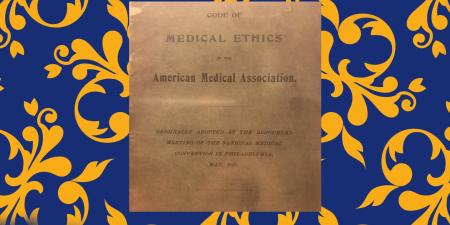Abstract
Environmental services is a mission-critical function of any health care organization, contributing in key ways to patients’ health, well-being, and overall care experiences. This article offers context from a risk management standpoint on the importance of recognizing, valuing, and protecting environmental services professionals’ contributions to health care organizations’ capacity to be fulfilling, safe places to be a patient and to care for patients.
Undervaluation of Environmental Services
Environmental Services (EVS) is a mission-critical function of any health care organization, contributing in great measure to patients’ health, well-being, and overall care experiences. Without EVS, there is no waste management, and proper and safe management of the various regulated waste streams far transcends simply casting overfilled plastic bags through a chute down to the chthonic nether regions of the facility’s basement. As others have noted, EVS workers should be appreciated and embraced as an integral part of the care management team. Patti Costello, executive director of the Association for the Health Care Environment, recently stated in her article, “We ARE Environmental Services,” that the health care environmental services vocation should be recognized as a true profession and not just a calling to serve.1
It is unjust that environmental services in the modern-day health care industry does not appear to have been given recognition commensurate with its incontrovertible contribution to the health and welfare of patients. Often, a lack of recognition, spotty and disingenuous gestures of appreciation, safety issues, exclusion (eg, from discharge huddles, throughput planning meetings, decision making), and what appears to be a virtual revolving door of exiting coworkers can contribute to EVS workers’ feelings of discontent and disenfranchisement and foment a divisive, tiered “class” structure (real or perceived) that widens the chasm between siloed health care workers within an organization.
In what follows, we discuss the challenges and contributions of EVS to assist health care workers and organizations in recognizing, supporting, protecting, embracing, and elevating the all-too-often taciturn and undervalued EVS workers and to foster EVS workers’ sense of fulfillment and pride in their work.
Regulatory Challenges
It is important to recognize the fact that, as the unsung heroes of health care, EVS workers certainly play a critical role in addressing the myriad of regulatory compliance challenges and in helping health care organizations avoid running afoul of regulatory agencies. The health care industry is fastidiously regulated and scrutinized by a number of enforcement agencies and accrediting organizations—the Joint Commission, the Centers for Medicare and Medicaid Services (CMS), the Environmental Protection Agency, and even the Nuclear Regulatory Commission. In fact, as Robert I. Field notes: “Almost every aspect of the field is overseen by one regulatory body or another, and sometimes by several.”2 The importance of the contributions of EVS workers and managers to the ongoing process of regulatory compliance cannot be overstated.
One set of regulations that particularly affects hospitals and requires the engagement of EVS pertains to solid wastes. Regarding the basic management of solid waste, for example, both CMS regulations and the Joint Commission’s hazardous materials standard (EC.02.02.01 EP19) stipulate that hospitals must have procedures for the proper routine storage and prompt disposal of trash.3,4 The management of regulated waste, however, is anything but basic. Waste streams generated by health care facilities encompass a diverse range of materials and process by-products, such as infectious and biohazardous waste; waste chemical products and solvents; expired, unused, and contaminated pharmaceuticals; cytotoxic drugs used in cancer treatment; waste products contaminated by radioactive diagnostic or radiotherapeutic materials; and, of course, solid municipal wastes.
As an amendment to the Solid Waste Disposal Act (SWDA) of 1965,5 Congress enacted the Resource Conservation and Recovery Act (RCRA) of 1976 to provide a framework for all federal solid waste regulations.6 The RCRA’s original objectives were actually to conserve energy and natural resources as well as to reduce the amount of waste generated. Congressional findings supporting the RCRA state: “The Congress finds with respect to materials, that … the recovery and conservation of such materials can reduce the dependence of the United States on foreign resources and reduce the deficit in its balance of payments.”7 The ensuing mishmash of legal mandates, however, includes the identification and classification of wastes and their management, collection, containment, and disposal in accordance with provisions essentially borrowed from regulations written for waste treatment storage and disposal facilities and the US Department of Transportation. For example, federal hazardous waste generator requirements include labeling and marking of containers “consistent with the Department of Transportation requirements at 49 CFR part 172 subpart E (labeling) or subpart F (placarding).”8 The sheer breadth, depth, and complexity of something that prima facie might appear as simple as taking out the trash can be absolutely mind-boggling.
Another amendment to the SWDA, the Medical Waste Tracking Act of 1988,9 was the antecedent for state-level biohazardous waste management laws, compelling leadership to ensure that EVS workers are trained and competent to safely and efficiently manage wastes contaminated with blood and other bodily fluids, human tissues and body parts, contaminated sharps waste, and so on. Yet frontline EVS workers, who operate within a dynamic and often demanding work environment for low wages, often bear the brunt of compliance failures. Based on our experience in hospital administration, hospitals tend to reactively address such failures in an effort to protect themselves from consequences of enforcement without acknowledging the complexity of EVS and, all too often, by assigning blame to EVS workers in the spirit of accountability.
Understanding Attrition
Based on our experience and observations working in hospital administration, individuals working in EVS are often treated as a dispensable resource. The EVS department is too often viewed as a revolving door of unskilled labor, and, should EVS employees underperform, they are quickly and easily replaced. The US Bureau of Labor Statistics projects that there will be 314 900 openings for janitors and building cleaners each year, on average, between 2020 and 2030, but many of these job openings “are expected to result from the need to replace workers who transfer to different occupations or exit the labor force.”10 The negative attitude toward and ephemeral tenure of EVS workers can contribute to their not being accorded due respect and appreciation. Yet, if an EVS employee’s short-term intent, commitment, and professional aspirations are anticipated and managed correctly, an EVS position can be an inroad to opportunity within an organization. Embodied within the language of the EVS job description is an implicit but important covenant between the employer and the employee, as individual professional development plans can pave the way for entry into other vocations or assuming roles of increasing responsibility.
Raising wages to retain frontline workers, however, can have negative consequences for the organization. Administrators might compensate for increased wages by reducing investments in training, job safety, working conditions, and fringe benefits, which in turn could lead to an increase in occupational injuries,11,12 workers’ compensation costs, and a need for replacement workers that incurs further training and orientation costs in a never-ending spiral of injury and costs to the organization.13,14 Moreover, organizational leaders might respond by reducing hours of more highly paid workers or taking action to increase worker productivity.14
EVS’ Critical Roles
If the hospital’s infection control practitioner is analogous to the architect of infection prevention policy, EVS workers interpret the blueprint and carry out the general procedures for buttressing the all-important barriers between the patients and disease. The integral role of EVS in infection prevention and control and in safety in the patient care environment is described in the Centers for Disease Control and Prevention’s Best Practices for Environmental Cleaning in Healthcare Facilities in Resource-Limited Settings:
It is well documented that environmental contamination in healthcare settings plays a role in the transmission of HAIs [hospital acquired infections]. Therefore, environmental cleaning is a fundamental intervention for infection prevention and control (IPC). It is a multifaceted intervention that involves cleaning and disinfection (when indicated) of the environment alongside other key program elements.15
Frontline EVS workers often bear the brunt of blame for health care organizational compliance failures.
Accordingly, health care facilities should integrate EVS into their infection prevention programs as well as their foundational culture of safety. With this in mind, infection prevention policies and procedures should form the basis of strong, sustainable processes and systems that are connected through cross-functional, cantilever scaffolding. Infection prevention professionals thus should develop strong bonds and partner with EVS workers, inasmuch as EVS is the tactical arm of infection control.
Protecting EVS Workers
In 2020, the incidence rate of nonfatal injuries and illnesses in the health care and social assistance industry was over 75% higher than that of the manufacturing industry and more than double that of the construction industry.16 EVS workers are routinely exposed to just about everything that can cause harm—from lifting and repetitive motion to hazardous chemical products, blood and body fluids, and contaminated sharp implements.
Health care leaders must develop and implement programs designed to address the unique portfolio of risks and hazardous or deleterious conditions associated with EVS operations and tasks. According to Occupational Safety and Health Administration (OSHA) regulations and applicable accreditation standards, occupational safety programs should incorporate, at the very least, the following standards:
- Bloodborne pathogens safety and regulated waste handing17
- Personal protective equipment (PPE) regulations18
- Respiratory protection (especially poignant in light of the pandemic)19
- The provision of information and employee training to help safeguard against harmful exposures.20
The Joint Commission standard EC.02.02.01 EP4 compels hospitals to manage risks related to hazardous materials and waste and to implement procedures to address hazardous materials spills or exposures.4 This standard includes providing unobstructed access to compliant emergency eyewash facilities where, during routine operations, the eyes of an employee may come into contact with a substance that can cause corrosion, severe irritation, or permanent tissue damage.21
Routinely, EVS workers may be exposed to risks related to ergonomics and body mechanics that can cause or exacerbate musculoskeletal disorders (MSD). These activities include lifting heavy items, bending, reaching overhead, pushing and pulling carts and trash bins, and performing repetitive tasks. To address these risks, leaders should incorporate ergonomic safety processes. According to OSHA guidelines: “An ergonomic process uses the principles of a safety and health program to address MSD hazards. Such a process should be viewed as an ongoing function that is incorporated into the daily operations, rather than as an individual project.”22
Programs designed to comply with the various OSHA and other occupational safety regulatory requirements are merely the beginning. Statutes and regulations codify only the minimum basic requirements. They are the foundation upon which injury prevention programs are built—and the floor under which they must never sink. Effective worker protection includes preventive measures; risk assessments; proactive hazard mitigation and controls (engineering, administrative, and PPE); postinjury intake and follow up; and effective return-to-work programs.
Embracing EVS Workers
It is imperative that health care leaders anticipate, recognize, and address intimidating, disruptive, or demeaning behavior—whether overt or subtle—that could contribute to EVS workers feeling unimportant, ostracized, and sometimes frightened. It has been strongly suggested that insouciance can be more damaging than rudeness. In “The Perils of Indifference,” Elie Wiesel states: “Indifference elicits no response…. Indifference is not a beginning; it is an end. And … it benefits the aggressor—never his victim, whose pain is magnified when he or she feels forgotten.”23 Indifference can make it difficult for an EVS worker to feel comfortable with and place trust in an organization’s “just culture.”
To underpin a functional, transparent culture of safety, it is important not only to reinforce basic principles of responsibility as they pertain to the treatment of others, but also to develop and implement zero tolerance policies that set forth a strict prohibition on intimidating, disrespectful, or otherwise inappropriate behaviors, irrespective of the role or level within the organization of the person who exhibits those behaviors. According to The Joint Commission’s Sentinel Event Alert 40 (“Behaviors That Undermine a Culture of Safety”), leadership should “Provide skills-based training and coaching for all leaders and managers … on appropriate professional behavior defined by the organization’s code of conduct.”24 This code of conduct (or principles of responsibility) should place a particular emphasis on mutual respect and be enforced “consistently and equitably among all staff regardless of seniority or clinical discipline.”24
All levels of the organization should consistently show deference to the unique expertise of the EVS professional. Showing respect underscores the importance of engendering a culture of inclusiveness, collaboration, and appreciation, wherein EVS staff is consistently considered and made to feel part of the team of caregivers. Health care professionals, including EVS, must work cross-functionally and seamlessly, demonstrating the leadership principle of interdependence, or being mutually reliant on one other. Additionally, health care facilities should recognize Environmental Services Week and celebrate incremental reductions in employee injury rates to show respect for EVS workers.
Elevating EVS
If a particular subject matter assists in making EVS managers or attendants better health care professionals, broadens their portfolio of skills, or improves quality of services, they should be supported and encouraged to really drill down—in other words, they should be encouraged to avail themselves of programs to explore, research, and study that subject matter and to eventually become resident subject matter experts. Relevant courses include infection prevention, biology, and courses of study offered through organizations such as the Association for the Health Care Environment of the American Hospital Association or the Indoor Environmental Healthcare and Hospitality Association.
In sum, the importance of placing particular emphasis and priority on the recognition and managing of some of the more intangible aspects of EVS cannot be overstated. These considerations include attrition, understanding the plethora of applicable regulatory demands, consistently providing for a safe workplace, and embracing and elevating EVS.
References
-
Costello P. We ARE environmental services. Association for the Health Care Environment®. September 29, 2016. Accessed April 25, 2022. https://www.ahe.org/we-are-environmental-services-article
-
Field RI. Why is health care regulation so complex? P T. 2008;33(10):607-608.
-
Condition of Participation: Physical Environment. 42 CFR §482.41(b)(4) (2022).
-
Joint Commission. Hazardous materials and waste risks—EC.02.02.01. Safety Management Services; 2021. Accessed April 14, 2022. https://safemgt.com/wp-content/uploads/2021/03/EC.02.02.01-Hazmat-Risks.doc
-
Solid Waste Disposal Act, Pub L No. 89-272, 79 Stat 992 (1965).
-
Resource Conservation and Recovery Act, 42 USC §6901 et seq (2022).
-
Solid Waste Disposal, General Provisions, Congressional Findings, 42 USC §6901(c) (2022).
-
Conditions for Exemption for a Large Quantity Generator That Accumulates Hazardous Waste. 40 CFR §262.17(a)(5) (2022).
-
Medical Waste Tracking Act, Pub L No. 100-582, 102 Stat 2950 (1988).
-
Occupational Outlook Handbook: janitors and building cleaners. US Bureau of Labor Statistics. Updated May 2020. Accessed February 1, 2022. https://www.bls.gov/ooh/building-and-grounds-cleaning/janitors-and-building-cleaners.htm
- Dembe AE, Erickson JB, Delbos RG, Banks SM. The impact of overtime and long work hours on occupational injuries and illnesses: new evidence from the United States. Occup Environ Med. 2005;62(9):588-597.
- Shannon HS, Mayr J, Haines T. Overview of the relationship between organizational and workplace factors and injury rates. Saf Sci. 1997;26(3):201-217.
-
Hradil V. Does minimum wage affect workplace safety? CERGE-EI working paper series 615. April 1, 2018. Accessed July 12, 2022. https://deliverypdf.ssrn.com/delivery.php?ID=748001100113101123085072112125016030099042041058020023102082086068097109009021102065019107039057114029060021091091028115120107017070064086060025022028094088090073002076031009077070091085112082080094126084000006003066088094024117077025022120027090005&EXT=pdf&INDEX=TRUE
-
Schmitt J. Why does the minimum wage have no discernible effect on employment? Center for Economic and Policy Research; 2013. Accessed July 12, 2022. https://cepr.net/documents/publications/min-wage-2013-02.pdf
-
National Center for Emerging and Zoonotic Infectious Diseases. Best Practices for Environmental Cleaning in Healthcare Facilities in Resource-Limited Settings. Version 2. Centers for Disease Control and Prevention; 2019. Accessed February 1, 2022. https://www.cdc.gov/hai/pdfs/resource-limited/environmental-cleaning-RLS-H.pdf
-
Injuries, illnesses, and fatalities. US Bureau for Labor Statistics. Updated November 3, 2021. Accessed February 1, 2022. https://www.bls.gov/iif/oshwc/osh/os/summ1_00_2020.htm
-
Toxic and Hazardous Substances, Bloodborne Pathogens. 29 CFR §1910.1030 (2022).
-
Personal Protective Equipment, General Requirements. 29 CFR §1910.132 (2022).
-
Personal Protective Equipment, Respiratory Protection. 29 CFR §1910.134 (2022).
-
Toxic and Hazardous Substances, Hazard Communication. 29 CFR §1910.1200 (2022).
-
Medical and First Aid, Medical Services and First Aid, 29 CFR §1910.151(c) (2022).
-
Ergonomics. Occupational Safety and Health Administration, US Department of Labor. Accessed February 1, 2022. https://www.osha.gov/ergonomics
-
Wiesel E. The perils of indifference. Transcript. American Rhetoric. April 12, 1999. Accessed April 14, 2022. https://www.americanrhetoric.com/speeches/ewieselperilsofindifference.html
-
Joint Commission. Behaviors that undermine a culture of safety. Sentinel Event Alert 40. July 9, 2008. Accessed April 14, 2022. https://www.jointcommission.org/-/media/tjc/documents/resources/patient-safety-topics/sentinel-event/sea_40.pdf



